Human
| style="background:#Template:Taxobox colour;"|Human[1] Fossil range: Pleistocene - Recent | ||||||||||||||||
|---|---|---|---|---|---|---|---|---|---|---|---|---|---|---|---|---|
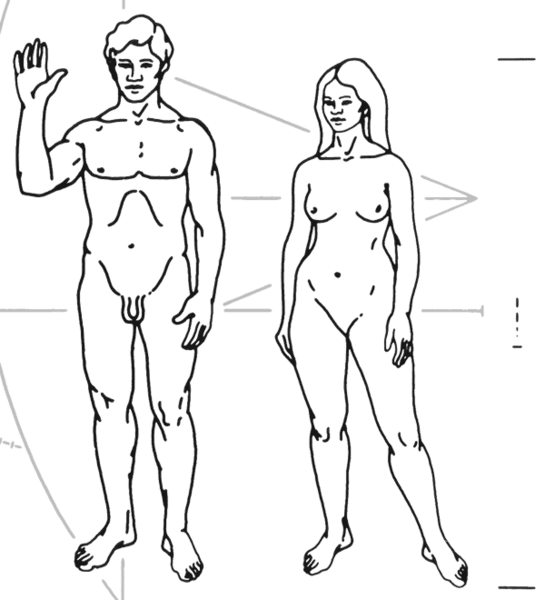 Humans depicted on the Pioneer plaque
| ||||||||||||||||
| style="background:#Template:Taxobox colour;" | Scientific classification | ||||||||||||||||
| ||||||||||||||||
| Trinomial name | ||||||||||||||||
| Homo sapiens sapiens Linnaeus, 1758 |
Editor-In-Chief: C. Michael Gibson, M.S., M.D. [2]
Overview
Humans, or human beings, are bipedal primates belonging to the mammalian species Homo sapiens (Latin: "wise human" or "knowing human"[2]) in the family Hominidae (the great apes).[3][4] DNA evidence indicates that modern humans originated in Africa about 200,000 years ago.[5] Compared to other species, humans have a highly developed brain, capable of abstract reasoning, language, introspection, and emotional suffering. This mental capability, combined with an erect body carriage that frees the forelimbs (arms) for manipulating objects, has allowed humans to make far greater use of tools than any other species. Humans now inhabit every continent on Earth, except Antarctica (although several governments maintain permanent research stations there, inhabited for short periods by scientists and other researchers). Humans also now have a continuous presence in low Earth orbit, occupying the International Space Station. The human population on Earth now amounts to over 6.6 billion, as of May 2008.[6]
Like most primates, humans are social by nature. However, they are particularly adept at utilizing systems of communication for self-expression, exchanging of ideas, and organization. Humans create complex social structures composed of many cooperating and competing groups, from families to nations. Social interactions between humans have established an extremely wide variety of traditions, rituals, ethics, values, social norms, and laws, which together form the basis of human society. Humans have a marked appreciation for beauty and aesthetics, which, combined with the desire for self-expression, has led to cultural innovations such as art, literature and music.
Humans are notable for their desire to understand and influence the world around them, seeking to explain and manipulate natural phenomena through science, philosophy, mythology and religion. This natural curiosity has led to the development of advanced tools and skills; humans are the only extant species known to build fires, cook their food, clothe themselves, and manipulate and develop numerous other technologies. Humans pass down their skills and knowledge to the next generations through education whether it is formal or informal.
History
Origin
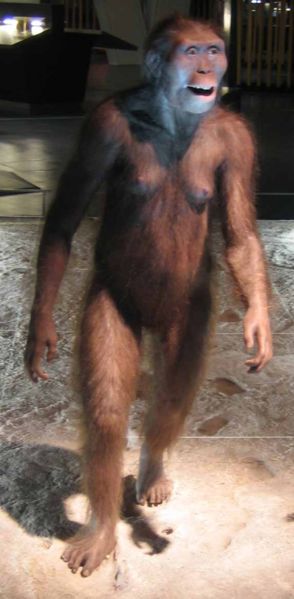
The scientific study of human evolution encompasses the development of the genus Homo, but usually involves studying other hominids and hominines as well, such as Australopithecus. "Modern humans" are defined as the Homo sapiens species, of which the only extant subspecies - our own - was formerly known as Homo sapiens sapiens (now simply known as Homo sapiens). Homo sapiens idaltu (roughly translated as "elder wise human"), the other known subspecies, is now extinct.[7] Anatomically modern humans first appear in the fossil record in Africa about 200,000 years ago.[8][9]
The closest living relatives of Homo sapiens are the two chimpanzee species: the Common Chimpanzee and the Bonobo. Full genome sequencing has resulted in the conclusion that "after 6.5 [million] years of separate evolution, the differences between chimpanzee and human are just 10 times greater than those between two unrelated people and 10 times less than those between rats and mice". Suggested differences between human and chimpanzee DNA sequences range between 95% and 99%.[10][11][12][13] It has been estimated that the human lineage diverged from that of chimpanzees about five million years ago, and from that of gorillas about eight million years ago. However, a hominid skull discovered in Chad in 2001, classified as Sahelanthropus tchadensis, is approximately seven million years old, which may indicate an earlier divergence.[14]
The Recent African Origin (RAO), or "out-of-Africa", hypothesis proposes that modern humans evolved in Africa before later migrating outwards to replace hominids in other parts of the world. Evidence from archaeogenetics accumulating since the 1990s has lent strong support to RAO, and has marginalized the competing multiregional hypothesis, which proposed that modern humans evolved, at least in part, from independent hominid populations.[15] Geneticists Lynn Jorde and Henry Harpending of the University of Utah propose that the variation in human DNA is minute compared to that of other species. They also propose that during the Late Pleistocene, the human population was reduced to a small number of breeding pairs – no more than 10,000, and possibly as few as 1,000 – resulting in a very small residual gene pool. Various reasons for this hypothetical bottleneck have been postulated, one being the Toba catastrophe theory.
Human evolution is characterized by a number of important morphological, developmental, physiological and behavioural changes, which have taken place since the split between the last common ancestor of humans and chimpanzees. The first major morphological change was the evolution of a bipedal locomotor adaptation from an arboreal or semi-arboreal one,[16] with all its attendant adaptations, such as a valgus knee, low intermembral index (long legs relative to the arms), and reduced upper-body strength.
Later, ancestral humans developed a much larger brain – typically 1,400 cm³ in modern humans, over twice the size of that of a chimpanzee or gorilla. The pattern of human postnatal brain growth differs from that of other apes (heterochrony), and allows for extended periods of social learning and language acquisition in juvenile humans. Physical anthropologists argue that the differences between the structure of human brains and those of other apes are even more significant than their differences in size.
Other significant morphological changes included: the evolution of a power and precision grip;[17] a reduced masticatory system; a reduction of the canine tooth; and the descent of the larynx and hyoid bone, making speech possible. An important physiological change in humans was the evolution of hidden oestrus, or concealed ovulation, which may have coincided with the evolution of important behavioural changes, such as pair bonding. Another significant behavioural change was the development of material culture, with human-made objects becoming increasingly common and diversified over time. The relationship between all these changes is the subject of ongoing debate.[18][19]
Rise of civilization
The most widely accepted view among current anthropologists is that Homo sapiens originated in the African savanna around 200,000 BP (Before Present), descending from Homo erectus, had inhabited Eurasia and Oceania by 40,000 BP, and finally inhabited the Americas approximately 14,500 years ago.[20] They displaced Homo neanderthalensis and other species descended from Homo erectus (which had inhabited Eurasia as early as 2 million years ago) through more successful reproduction and competition for resources.
Until c. 10,000 years ago, most humans lived as hunter-gatherers. They generally lived in small nomadic groups known as band societies. The advent of agriculture prompted the Neolithic Revolution, when access to food surplus led to the formation of permanent human settlements, the domestication of animals and the use of metal tools. Agriculture encouraged trade and cooperation, and led to complex society. Because of the significance of this date for human society, it is the epoch of the Holocene calendar or Human Era.
About 6,000 years ago, the first proto-states developed in Mesopotamia, Egypt and the Indus Valley. Military forces were formed for protection, and government bureaucracies for administration. States cooperated and competed for resources, in some cases waging wars. Around 2,000–3,000 years ago, some states, such as Persia, India, China and Rome, developed through conquest into the first expansive empires. Influential religions, such as Judaism, originating in the Middle East, and Hinduism, a religious tradition that originated in South Asia, also rose to prominence at this time.
The late Middle Ages saw the rise of revolutionary ideas and technologies. In China, an advanced and urbanized economy promoted innovations such as printing and the compass, while the Islamic Golden Age saw major scientific advancements in Muslim empires. In Europe, the rediscovery of classical learning and inventions such as the printing press led to the Renaissance in the 14th century. Over the next 500 years, exploration and imperialistic conquest brought much of the Americas, Asia, and Africa under European control, leading to later struggles for independence. The Scientific Revolution in the 17th century and the Industrial Revolution in the 18th – 19th centuries promoted major innovations in transport, such as the railway and automobile; energy development, such as coal and electricity; and government, such as representative democracy and Communism.
As a result of such changes, modern humans live in a world that has become increasingly globalized and interconnected. Although this has encouraged the growth of science, art, and technology, it has also led to culture clashes, the development and use of weapons of mass destruction, and increased environmental destruction and pollution, affecting not only themselves but also most other life forms on the planet.
Habitat and population
Early human settlements were dependent on proximity to water and, depending on the lifestyle, other natural resources, such as fertile land for growing crops and grazing livestock, or seasonally by hunting populations of prey. However, humans have a great capacity for altering their habitats by various methods, such as through irrigation, urban planning, construction, transport, manufacturing goods, deforestation and desertification. With the advent of large-scale trade and transport infrastructure, proximity to these resources has become unnecessary, and in many places these factors are no longer a driving force behind the growth and decline of a population. Nonetheless, the manner in which a habitat is altered is often a major determinant in population change.
Technology has allowed humans to colonize all of the continents and adapt to all climates. Within the last few decades, humans have explored Antarctica, the ocean depths, and space, although long-term habitation of these environments is not yet possible. With a population of over six billion, humans are among the most numerous of the large mammals. Most humans (61%) live in Asia. The vast majority of the remainder live in the Americas (14%), Africa (14%) and Europe (11%), with 0.5% in Oceania.
Human habitation within closed ecological systems in hostile environments, such as Antarctica and outer space, is expensive, typically limited in duration, and restricted to scientific, military, or industrial expeditions. Life in space has been very sporadic, with no more than thirteen humans in space at any given time. Between 1969 and 1972, two humans at a time spent brief intervals on the Moon. As of early 2008, no other celestial body has been visited by human beings, although there has been a continuous human presence in space since the launch of the initial crew to inhabit the International Space Station on October 31, 2000. Other celestial bodies have, however, been visited by human-made objects.
Since 1800, the human population increased from one billion to over six billion.[21] In 2004, some 2.5 billion out of 6.3 billion people (39.7%) lived in urban areas, and this percentage is expected to rise throughout the 21st century. Problems for humans living in cities include various forms of pollution and crime,[22] especially in inner city and suburban slums. Benefits of urban living include increased literacy, access to the global canon of human knowledge and decreased susceptibility to rural famines.
Humans have had a dramatic effect on the environment. It has been hypothesized that human predation has contributed to the extinction of numerous species. As humans stand at the top of the food chain and are not generally preyed upon, they have been described as superpredators.[23] Currently, through land development and pollution, humans are thought to be the main contributor to global climate change.[24] This is believed to be a major contributor to the ongoing Holocene extinction event, a mass extinction which, if it continues at its current rate, is predicted to wipe out half of all species over the next century.[25][26]
Biology
Physiology and genetics
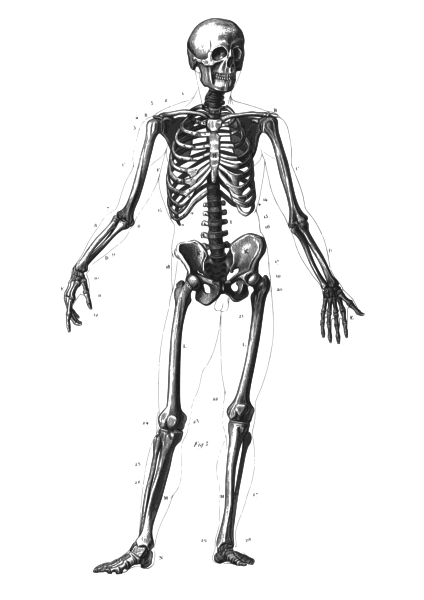
Human body types vary substantially. Although body size is largely determined by genes, it is also significantly influenced by environmental factors such as diet and exercise. The average height of an adult human is about 1.5 to 1.8 m (5 to 6 feet) tall, although this varies significantly from place to place.[27][28] Unlike most other primates, humans are capable of fully bipedal locomotion, thus leaving their arms available for manipulating objects using their hands, aided especially by opposable thumbs.
Although humans appear relatively hairless compared to other primates, with notable hair growth occurring chiefly on the top of the head, underarms and pubic area, the average human has more hair follicles on his or her body than the average chimpanzee. The main distinction is that human hairs are shorter, finer, and less heavily pigmented than the average chimpanzee's, thus making them harder to see.[29]
The hue of human hair and skin is determined by the presence of pigments called melanins. Human skin hues can range from very dark brown to very pale pink, while human hair ranges from blond to brown to red to, most commonly, black,[30] depending on the amount of melanin (an effective sun blocking pigment) in the skin. Most researchers believe that skin darkening was an adaptation that evolved as a protection against ultraviolet solar radiation. More recently, however, it has been argued that particular skin colors are an adaptation to balance folate, which is destroyed by ultraviolet radiation, and vitamin D, which requires sunlight to form.[31] The skin pigmentation of contemporary humans is geographically stratified, and in general correlates with the level of ultraviolet radiation. Human skin also has a capacity to darken (sun tanning) in response to exposure to ultraviolet radiation.[32][33] Humans tend to be physically weaker than other similairly sized primates, with young, conditioned male humans having been shown to be unable to match the strength of female orangutans which are at least three times stronger.[34]
Humans have proportionately shorter palates and much smaller teeth than other primates. They are the only primates to have short 'flush' canine teeth. Humans have characteristically crowded teeth, with gaps from lost teeth usually closing up quickly in young specimens. Humans are gradually losing their wisdom teeth, with some individuals having them congenitally absent.[35]
The average sleep requirement is between seven and eight hours a day for an adult and nine to ten hours for a child; elderly people usually sleep for six to seven hours. Experiencing less sleep than this is common in modern societies; this sleep deprivation can lead to negative effects. A sustained restriction of adult sleep to four hours per day has been shown to correlate with changes in physiology and mental state, including fatigue, aggression, and bodily discomfort.
Humans are an eukaryotic species. Each diploid cell has two sets of 23 chromosomes, each set received from one parent. There are 22 pairs of autosomes and one pair of sex chromosomes. By present estimates, humans have approximately 20,000 – 25,000 genes. Like other mammals, humans have an XY sex-determination system, so that females have the sex chromosomes XX and males have XY. The X chromosome is larger and carries many genes not on the Y chromosome, which means that recessive diseases associated with X-linked genes, such as hemophilia, affect men more often than women.
Life cycle
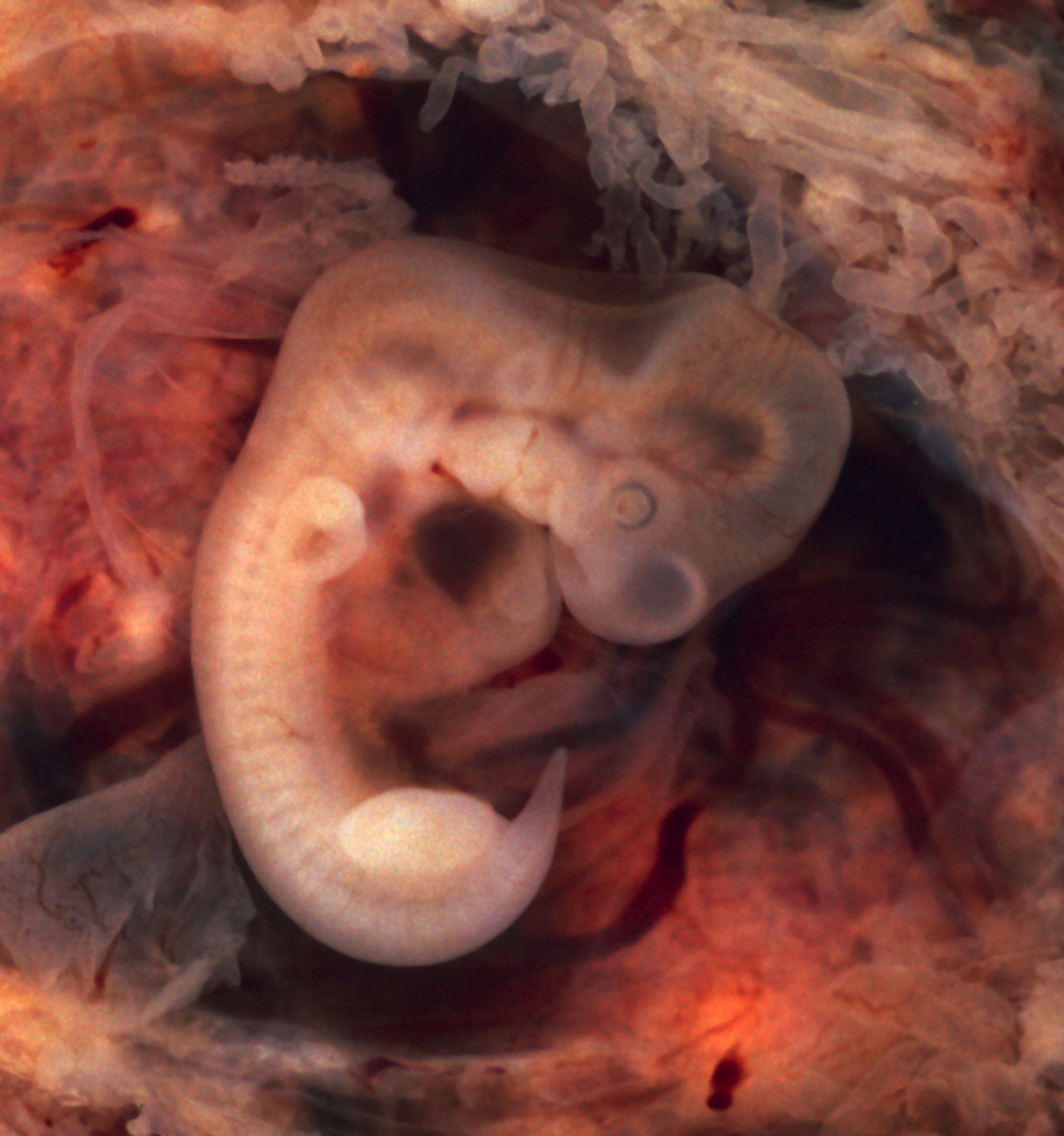
The human life cycle is similar to that of other placental mammals. The fertilized egg divides inside the female's uterus to become an embryo, which over a period of thirty-eight weeks (9 months) of gestation becomes a human fetus. After this span of time, the fully-grown fetus is birthed from the woman's body and breathes independently as an infant for the first time. At this point, most modern cultures recognize the baby as a person entitled to the full protection of the law, though some jurisdictions extend personhood earlier to human fetuses while they remain in the uterus.
Compared with other species, human childbirth is dangerous. Painful labors lasting twenty-four hours or more are not uncommon and often leads to the death of the mother, or the child.[36] This is because of both the relatively large fetal head circumference (for housing the brain) and the mother's relatively narrow pelvis (a trait required for successful bipedalism, by way of natural selection).[37][38] The chances of a successful labor increased significantly during the 20th century in wealthier countries with the advent of new medical technologies. In contrast, pregnancy and natural childbirth remain relatively hazardous ordeals in developing regions of the world, with maternal death rates approximately 100 times more common than in developed countries.[39]
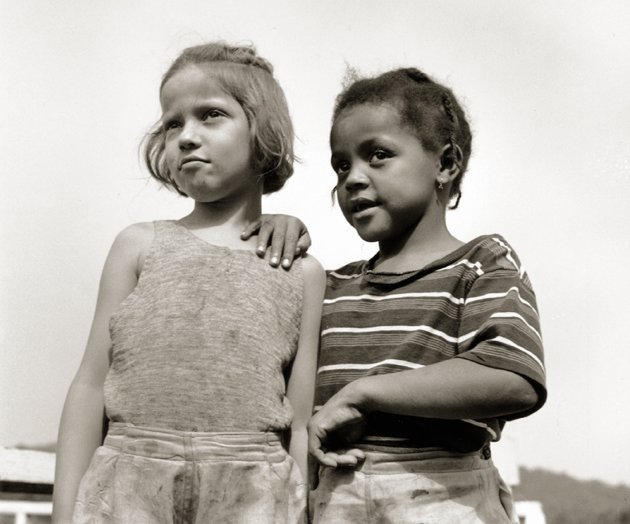
In developed countries, infants are typically 3 – 4 kg (6 – 9 pounds) in weight and 50 – 60 cm (20 – 24 inches) in height at birth.[41] However, low birth weight is common in developing countries, and contributes to the high levels of infant mortality in these regions.[42] Helpless at birth, humans continue to grow for some years, typically reaching sexual maturity at 12 to 15 years of age. Females continue to develop physically until around the age of 18, whereas male development continues until around age 21. The human life span can be split into a number of stages: infancy, childhood, adolescence, young adulthood, adulthood and old age. The lengths of these stages, however, have varied across cultures and time periods. Compared to other primates, humans experience an unusually rapid growth spurt during adolescence, where the body grows 25% in size. Chimpanzees, for example, grow only 14%.[43]
There are significant differences in life expectancy around the world. The developed world generally aging, with the median age around 40 years (highest in Monaco at 45.1 years). In the developing world the median age is between 15 and 20 years. Life expectancy at birth in Hong Kong, China is 84.8 years for a female and 78.9 for a male, while in Swaziland, primarily because of AIDS, it is 31.3 years for both sexes.[44] While one in five Europeans is 60 years of age or older, only one in twenty Africans is 60 years of age or older.[45] The number of centenarians (humans of age 100 years or older) in the world was estimated by the United Nations at 210,000 in 2002.[46] At least one person, Jeanne Calment, is known to have reached the age of 122 years; higher ages have been claimed but they are not well substantiated. Worldwide, there are 81 men aged 60 or older for every 100 women of that age group, and among the oldest, there are 53 men for every 100 women.
Humans are unique in the widespread onset of female menopause during the latter stage of life. Menopause is believed to have arisen due to the Grandmother hypothesis, in which it is in the mother's reproductive interest to forgo the risks of death from childbirth at older ages in exchange for investing in the viability of her already living offspring.[47]
The philosophical questions of when human personhood begins and whether it persists after death are the subject of considerable debate. The prospect of death causes unease or fear for most humans, distinct from the immediate awareness of a threat. Burial ceremonies are characteristic of human societies, often accompanied by beliefs in an afterlife or immortality.
Diet
Early Homo sapiens employed a hunter-gatherer method as their primary means of food collection, involving combining stationary plant and fungal food sources (such as fruits, grains, tubers, and mushrooms) with wild game, which must be hunted and killed in order to be consumed. It is believed that humans have used fire to prepare and cook food prior to eating since the time of their divergence from Homo erectus.
Humans are omnivorous, capable of consuming both plant and animal products. A view of humans as omnivores is supported by the evidence that both a pure animal and a pure vegetable diet can lead to deficiency diseases in humans. A pure animal diet can, for instance, lead to scurvy, a vitamin C deficiency, while a pure plant diet may lead to vitamin B12 deficiency.[48] The biggest problem posed by a vitamin B12 deficiency is that it severely limits the body's ability to synthesize folic acid, a main source of B group carriage. In order to counter the constant folic acid deficiency, one must regularly consume large amounts of folic acid, as may be found in green, leafy vegetables. Properly planned vegetarian and vegan diets, however, have been found to completely satisfy nutritional needs in every stage of life. [49]
The human diet is prominently reflected in human culture, and has led to the development of food science. In general, humans can survive for two to eight weeks without food, depending on stored body fat. Survival without water is usually limited to three or four days. Lack of food remains a serious problem, with about 300,000 people starving to death every year.[50] Childhood malnutrition is also common and contributes to the global burden of disease.[51] However global food distribution is not even, and obesity among some human populations has increased to almost epidemic proportions, leading to health complications and increased mortality in some developed, and a few developing countries. The United States Centers for Disease Control (CDC) state that 32% of American adults over the age of 20 are obese, while 66.5% are obese or overweight. Obesity is caused by consuming more calories than are expended, with many attributing excessive weight gain to a combination of overeating and insufficient exercise.
At least ten thousand years ago, humans developed agriculture,[52] which has substantially altered the kind of food people eat. This has led to increased populations, the development of cities, and because of increased population density, the wider spread of infectious diseases. The types of food consumed, and the way in which they are prepared, has varied widely by time, location, and culture.
Psychology
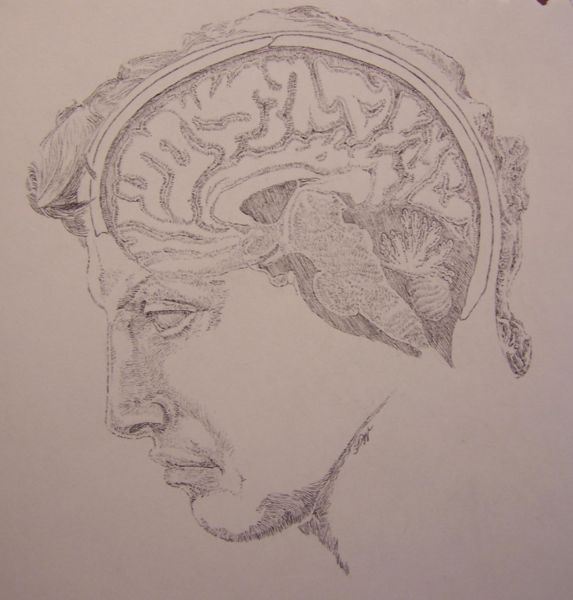
The human brain is the center of the central nervous system in humans, and acts as the primary control center for the peripheral nervous system. The brain controls "lower", or involuntary, autonomic activities such as the respiration, and digestion. The brain also controls "higher" order, conscious activities, such as thought, reasoning, and abstraction.[53] These cognitive processes constitute the mind, and, along with their behavioral consequences, are studied in the field of psychology.
Generally regarded as more capable of these higher order activities, the human brain is believed to be more "intelligent" in general than that of any other known species. While many animals are capable of creating structures and using simple tools — mostly through instinct and mimicry — human technology is vastly more complex, and is constantly evolving and improving through time. Even the most ancient human tools and structures are far more advanced than any structure or tool created by any other animal.[54] Modern anthropology has tended to bear out Darwin's proposition that "the difference in mind between man and the higher animals, great as it is, certainly is one of degree and not of kind".[55]
Consciousness and thought
The human ability to think abstractly may be unparalleled in the animal kingdom. Humans are one of only six species to pass the mirror test — which tests whether an animal recognizes its reflection as an image of itself — along with chimpanzees, orangutans, dolphins, and pigeons.[56] In October 2006, three elephants at the Bronx Zoo also passed this test.[57] Most human children will pass the mirror test at 18 months old.[58] However, the usefulness of this test as a true test of consciousness has been disputed (see mirror test), and this may be a matter of degree rather than a sharp divide. Monkeys have been trained to apply abstract rules in tasks.[59] The human brain perceives the external world through the senses, and each individual human is influenced greatly by his or her experiences, leading to subjective views of existence and the passage of time. Humans are variously said to possess consciousness, self-awareness, and a mind, which correspond roughly to the mental processes of thought. These are said to possess qualities such as self-awareness, sentience, sapience, and the ability to perceive the relationship between oneself and one's environment. The extent to which the mind constructs or experiences the outer world is a matter of debate, as are the definitions and validity of many of the terms used above. The philosopher of cognitive science Daniel Dennett, for example, argues that there is no such thing as a narrative centre called the "mind", but that instead there is simply a collection of sensory inputs and outputs: different kinds of "software" running in parallel.[60] Psychologist B.F. Skinner has argued that the mind is an explanatory fiction that diverts attention from environmental causes of behavior,[61] and that what are commonly seen as mental processes may be better conceived of as forms of covert verbal behavior.[62]
Humans study the more physical aspects of the mind and brain, and by extension of the nervous system, in the field of neurology, the more behavioral in the field of psychology, and a sometimes loosely-defined area between in the field of psychiatry, which treats mental illness and behavioral disorders. Psychology does not necessarily refer to the brain or nervous system, and can be framed purely in terms of phenomenological or information processing theories of the mind. Increasingly, however, an understanding of brain functions is being included in psychological theory and practice, particularly in areas such as artificial intelligence, neuropsychology, and cognitive neuroscience.
The nature of thought is central to psychology and related fields. Cognitive psychology studies cognition, the mental processes underlying behavior. It uses information processing as a framework for understanding the mind. Perception, learning, problem solving, memory, attention, language and emotion are all well-researched areas as well. Cognitive psychology is associated with a school of thought known as cognitivism, whose adherents argue for an information processing model of mental function, informed by positivism and experimental psychology. Techniques and models from cognitive psychology are widely applied and form the mainstay of psychological theories in many areas of both research and applied psychology. Largely focusing on the development of the human mind through the life span, developmental psychology seeks to understand how people come to perceive, understand, and act within the world and how these processes change as they age. This may focus on intellectual, cognitive, neural, social, or moral development.
Some philosophers divide consciousness into phenomenal consciousness, which is experience itself, and access consciousness, which is the processing of the things in experience.[63] Phenomenal consciousness is the state of being conscious, such as when they say "I am conscious." Access consciousness is being conscious of something in relation to abstract concepts, such as when one says "I am conscious of these words." Various forms of access consciousness include awareness, self-awareness, conscience, stream of consciousness, Husserl's phenomenology, and intentionality. The concept of phenomenal consciousness, in modern history, according to some, is closely related to the concept of qualia. Social psychology links sociology with psychology in their shared study of the nature and causes of human social interaction, with an emphasis on how people think towards each other and how they relate to each other. The behavior and mental processes, both human and non-human, can be described through animal cognition, ethology, evolutionary psychology, and comparative psychology as well. Human ecology is an academic discipline that investigates how humans and human societies interact with both their natural environment and the human social environment.
Motivation and emotion

Motivation is the driving force of desire behind all deliberate actions of human beings. Motivation is based on emotion — specifically, on the search for satisfaction (positive emotional experiences), and the avoidance of conflict. Positive and negative is defined by the individual brain state, which may be influenced by social norms: a person may be driven to self-injury or violence because their brain is conditioned to create a positive response to these actions. Motivation is important because it is involved in the performance of all learned responses. Within psychology, conflict avoidance and the libido are seen to be primary motivators. Within economics motivation is often seen to be based on financial incentives, moral incentives, or coercive incentives. Religions generally posit divine or demonic influences.
Happiness, or the state of being happy, is a human emotional condition. The definition of happiness is a common philosophical topic. Some people might define it as the best condition which a human can have — a condition of mental and physical health. Others define it as freedom from want and distress; consciousness of the good order of things; assurance of one's place in the universe or society.
Emotion has a significant influence on, or can even be said to control, human behavior, though historically many cultures and philosophers have for various reasons discouraged allowing this influence to go unchecked. Emotional experiences perceived as pleasant, such as love, admiration, or joy, contrast with those perceived as unpleasant, like hate, envy, or sorrow. There is often a distinction made between refined emotions which are socially learned and survival oriented emotions, which are thought to be innate. Human exploration of emotions as separate from other neurological phenomena is worthy of note, particularly in cultures where emotion is considered separate from physiological state. In some cultural medical theories emotion is considered so synonymous with certain forms of physical health that no difference is thought to exist. The Stoics believed excessive emotion was harmful, while some Sufi teachers (in particular, the poet and astronomer Omar Khayyám) felt certain extreme emotions could yield a conceptual perfection, what is often translated as ecstasy.
In modern scientific thought, certain refined emotions are considered to be a complex neural trait innate in a variety of domesticated and on-domesticated mammals. These were commonly developed in reaction to superior survival mechanisms and intelligent interaction with each other and the environment; as such, refined emotion is not in all cases as discrete and separate from natural neural function as was once assumed. However, when humans function in civilized tandem, it has been noted that uninhibited acting on extreme emotion can lead to social disorder and crime.
Sexuality and love
Human sexuality, besides ensuring biological reproduction, has important social functions: it creates physical intimacy, bonds, and hierarchies among individuals; may be directed to spiritual transcendence (according to some traditions); and in a hedonistic sense to the enjoyment of activity involving sexual gratification. Sexual desire, or libido, is experienced as a bodily urge, often accompanied by strong emotions such as love, ecstasy and jealousy. The extreme importance of sexuality in the human species can be seen in a number of physical features, among them hidden ovulation, strong sexual dimorphism when compared to the chimpanzees, permanent secondary sexual characteristics, the forming of pair bonds based on sexual attraction as a common social structure and sexual ability in females outside of ovulation. These adaptations indicate that the importance of sexuality in humans is on par with that found in the Bonobo, and that the complex human sexual behaviour has a long evolutionary history.
As with other human self-descriptions, humans propose that it is high intelligence and complex societies of humans that have produced the most complex sexual behaviors of any animal, including a great many behaviors that are not directly connected with reproduction.
Human sexual choices are usually made in reference to cultural norms, which vary widely. Restrictions are sometimes determined by religious beliefs or social customs. The pioneering researcher Sigmund Freud believed that humans are born polymorphously perverse, which means that any number of objects could be a source of pleasure. According to Freud, humans then pass through five stages of psychosexual development (and can fixate on any stage because of various traumas during the process). For Alfred Kinsey, another influential sex researcher, people can fall anywhere along a continuous scale of sexual orientation (with only small minorities fully heterosexual or homosexual). Recent studies of neurology and genetics suggest people may be born with one sexual orientation or another, so there is not currently a clear consensus among sex researchers.[64][65]
Culture
Template:Social Infobox/Human Template:Details more
Culture is defined here as a set of distinctive material, intellectual, emotional, and spiritual features of a social group, including art, literature, lifestyles, value systems, traditions, rituals, and beliefs. The link between human biology and human behavior and culture is often very close, making it difficult to clearly divide topics into one area or the other; as such, the placement of some subjects may be based primarily on convention. Culture consists of values, social norms, and artifacts. A culture's values define what it holds to be important or ethical. Closely linked are norms, expectations of how people ought to behave, bound by tradition. Artifacts, or material culture, are objects derived from the culture's values, norms, and understanding of the world. The mainstream anthropological view of culture implies that most experience a strong resistance when reminded that there is an animal as well as a spiritual aspect to human nature.[55]
Language
Template:Details more The capacity humans have to transfer concepts, ideas and notions through speech and writing is unrivaled in known species. Unlike the call systems of other primates which are closed, human language is far more open, and gains variety in different situations. The human language has the quality of displacement, using words to represent things and happenings that are not presently or locally occurring, but elsewhere or at a different time.[35] Technology has even advanced so as to allow the communication of mass data upon request and over great distance through data-nets and programs such as Wikipedia. In this way data networks are important to the continuing development of language; changing it as just as Gutenberg did with the printing press. The faculty of speech is a defining feature of humanity, possibly predating phylogenetic separation of the modern population. Language is central to the communication between humans, as well as being central to the sense of identity that unites nations, cultures and ethnic groups. The invention of writing systems at least 5,000 years ago allowed the preservation of language on material objects, and was a major step in cultural evolution. Language is closely tied to ritual and religion (cf. mantra, sacred text). The science of linguistics describes the structure of language and the relationship between languages. There are approximately 6,000 different languages currently in use, including sign languages, and many thousands more that are considered extinct.
Spirituality and religion
Template:Details more Religion—sometimes used interchangeably with "faith"—is generally defined as a belief system concerning the supernatural, sacred or divine, and moral codes, practices, values, institutions and rituals associated with such belief. In the course of its development, religion has taken on many forms that vary by culture and individual perspective. Some of the chief questions and issues religions are concerned with include life after death (commonly involving belief in an afterlife), the origin of life (the source of a variety of creation myths), the nature of the universe (religious cosmology) and its ultimate fate (eschatology), and what is moral or immoral. A common source in religions for answers to these questions are transcendent divine beings such as deities or a singular God, although not all religions are theistic — many are nontheistic or ambiguous on the topic, particularly among the Eastern religions. Spirituality, belief or involvement in matters of the soul or spirit, is one of the many different approaches humans take in trying to answer fundamental questions about humankind's place in the universe, the meaning of life, and the ideal way to live one's life. Though these topics have also been addressed by philosophy, and to some extent by science, spirituality is unique in that it focuses on mystical or supernatural concepts such as karma and God.
Although a majority of humans profess some variety of religious or spiritual belief, some are irreligious, that is lacking or rejecting belief in the supernatural or spiritual. Additionally, although most religions and spiritual beliefs are clearly distinct from science on both a philosophical and methodological level, the two are not generally considered to be mutually exclusive; a majority of humans hold a mix of both scientific and religious views. The distinction between philosophy and religion, on the other hand, is at times less clear, and the two are linked in such fields as the philosophy of religion and theology. Other humans have no religious beliefs and are atheists, scientific skeptics, agnostics or simply non-religious.
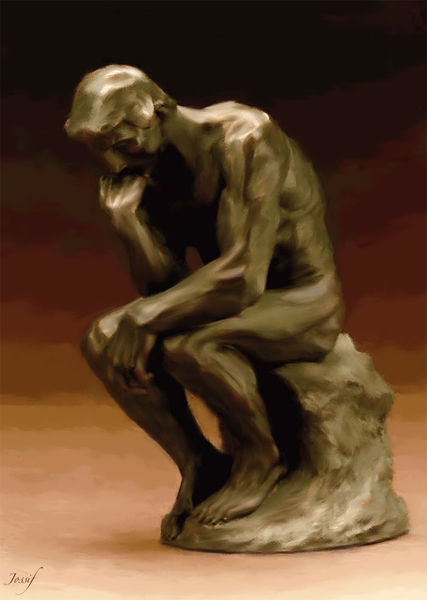
Philosophy and self-reflection
Template:Details more Philosophy is a discipline or field of study involving the investigation, analysis, and development of ideas at a general, abstract, or fundamental level. It is the discipline searching for a general understanding of values and reality by chiefly speculative means. The core philosophical disciplines are logic, ontology or metaphysics, epistemology, and axiology, which includes the branches of ethics and aesthetics. Philosophy covers a very wide range of approaches, and is also used to refer to a worldview, to a perspective on an issue, or to the positions argued for by a particular philosopher or school of philosophy.

Metaphysics is a branch of philosophy concerned with the study of first principles, being and existence (ontology). In between the doctrines of religion and science, stands the philosophical perspective of metaphysical cosmology. This ancient field of study seeks to draw logical conclusions about the nature of the universe, humanity, god, and/or their connections based on the extension of some set of presumed facts borrowed from religion and/or observation. Humans often consider themselves to be the dominant species on Earth, and the most advanced in intelligence and ability to manage their environment. This belief is especially strong in modern Western culture. Alongside such claims of dominance is often found radical pessimism because of the frailty and brevity of human life.
Humanism is a philosophy which defines a socio-political doctrine the bounds of which are not constrained by those of locally developed cultures, but which seeks to include all of humanity and all issues common to human beings. Because spiritual beliefs of a community often manifests as religious doctrine, the history of which is as factious as it is unitive, secular humanism grew as an answer to the need for a common philosophy that transcended the cultural boundaries of local moral codes and religions. Many humanists are religious, however, and see humanism as simply a mature expression of a common truth present in most religions. Humanists affirm the possibility of an objective truth and accept that human perception of that truth is imperfect. The most basic tenets of humanism are that humans matter and can solve human problems, and that science, freedom of speech, rational thought, democracy, and freedom in the arts are worthy pursuits or goals for all peoples. Humanism depends chiefly on reason and logic without consideration for the supernatural.
Art, music, and literature

Template:Details more Artistic works have existed for almost as long as humankind, from early pre-historic art to contemporary art. Art is one of the most unusual aspects of human behavior and a key distinguishing feature of humans from other species, In fact the only species to do so. Art has only been around for the last 35,000 years which could suggest that this was the time when humans started to 'think'.
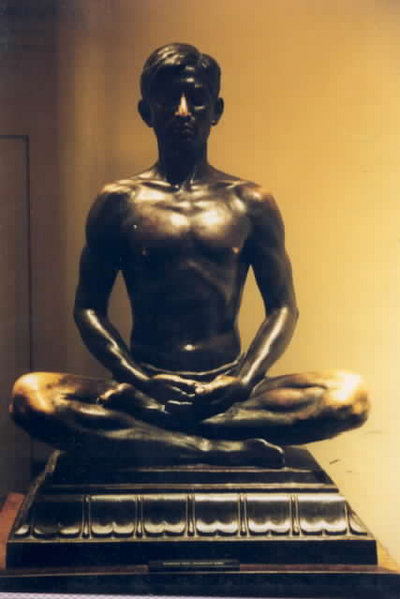
As a form of cultural expression by humans, art may be defined by the pursuit of diversity and the usage of narratives of liberation and exploration (i.e. art history, art criticism, and art theory) to mediate its boundaries. This distinction may be applied to objects or performances, current or historical, and its prestige extends to those who made, found, exhibit, or own them. In the modern use of the word, art is commonly understood to be the process or result of making material works which, from concept to creation, adhere to the "creative impulse" of human beings. Art is distinguished from other works by being in large part unprompted by necessity, by biological drive, or by any undisciplined pursuit of recreation.
Music is a natural intuitive phenomenon based on the three distinct and interrelated organization structures of rhythm, harmony, and melody. Listening to music is perhaps the most common and universal form of entertainment for humans, while learning and understanding it are popular disciplines. There are a wide variety of music genres and ethnic musics. Literature, the body of written — and possibly oral — works, especially creative ones, includes prose, poetry and drama, both fiction and non-fiction. Literature includes such genres as epic, legend, myth, ballad, and folklore.
Science and technology
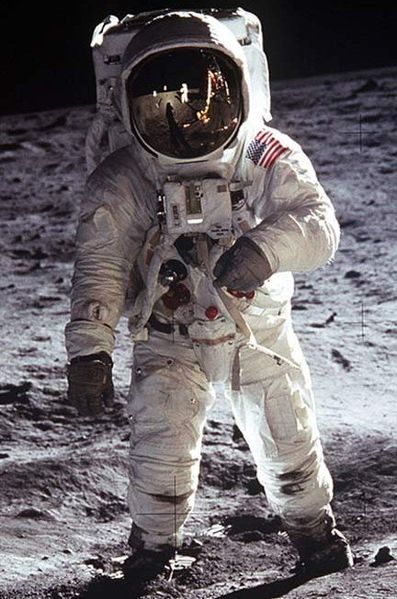
Template:Details more Science is the discovery of knowledge about the world by verifiable means. Technology is the objects humans make to serve their purposes. Human cultures are both characterized and differentiated by the objects that they make and use. Archaeology attempts to tell the story of past or lost cultures in part by close examination of the artifacts they produced. Early humans left stone tools, pottery and jewelry that are particular to various regions and times. Improvements in technology are passed from one culture to another. For instance, the cultivation of crops arose in several different locations, but quickly spread to be an almost ubiquitous feature of human life. Similarly, advances in weapons, architecture and metallurgy are quickly disseminated.
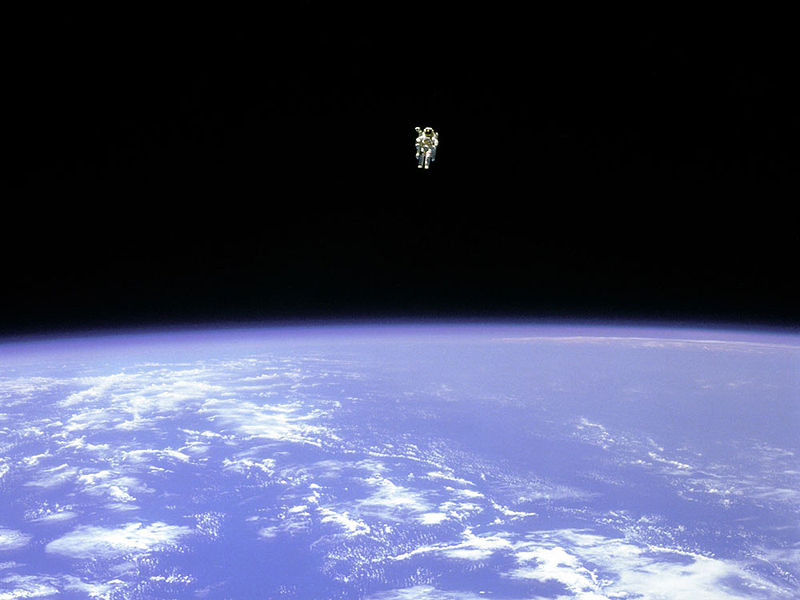
Although such techniques can be passed on by oral tradition, the development of writing, itself a kind of technology, made it possible to pass information from generation to generation and from region to region with greater accuracy. Together, these developments made possible the commencement of civilization and urbanization, with their inherently complex social arrangements. Eventually this led to the institutionalization of the development of new technology, and the associated understanding of the way the world functions. This science now forms a central part of human culture. In recent times, physics and astrophysics have come to play a central role in shaping what is now known as physical cosmology, that is, the understanding of the universe through scientific observation and experiment. This discipline, which focuses on the universe as it exists on the largest scales and at the earliest times, begins by arguing for the big bang, a sort of cosmic expansion from which the universe itself is said to have erupted ~13.7 ± 0.2 billion (109) years ago. After its violent beginnings and until its very end, scientists then propose that the entire history of the universe has been an orderly progression governed by physical laws.
Race and ethnicity
Template:Details more Humans often categorize themselves in terms of race or ethnicity, although the validity of human races as true biological categories is questionable.[66] Human racial categories are based on both ancestry and visible traits, especially skin color and facial features. These categories may also carry some information on non-visible biological traits, such as the risk of developing particular diseases such as sickle-cell disease.[67] Currently available genetic and archaeological evidence is generally interpreted as supportive of a recent single origin of modern humans in East Africa.[68] Current genetic studies have demonstrated that humans on the African continent are most genetically diverse.[69] However, compared to many other animals, human gene sequences are remarkably homogeneous.[70][71][72][73] It has been repeatedly demonstrated that the great majority of genetic variation occurs within "racial groups", with only 5 to 15% of total variation occurring between racial groups.[74] However, this remains an area of active debate.[75][76] Ethnic groups, on the other hand, are more often linked by linguistic, cultural, ancestral, and national or regional ties. Self-identification with an ethnic group is based on kinship and descent. Race and ethnicity can lead to variant treatment and impact social identity, giving rise to racism and the theory of identity politics.
Society, government, and politics

Template:Details more Template:Details more Society is the system of organizations and institutions arising from interaction between humans. A state is an organized political community occupying a definite territory, having an organized government, and possessing internal and external sovereignty. Recognition of the state's claim to independence by other states, enabling it to enter into international agreements, is often important to the establishment of its statehood. The "state" can also be defined in terms of domestic conditions, specifically, as conceptualized by Max Weber, "a state is a human community that (successfully) claims the monopoly of the 'legitimate' use of physical force within a given territory."[77]
Government can be defined as the political means of creating and enforcing laws; typically via a bureaucratic hierarchy. Politics is the process by which decisions are made within groups. Although the term is generally applied to behavior within governments, politics is also observed in all human group interactions, including corporate, academic, and religious institutions. Many different political systems exist, as do many different ways of understanding them, and many definitions overlap. The most common form of government worldwide is a republic, however other examples include monarchy, social democracy, military dictatorship and theocracy. All of these issues have a direct relationship with economics.
War
War is a state of widespread conflict between states, organizations, or relatively large groups of people, which is characterized by the use of lethal violence between combatants or upon civilians. It is estimated that during the 20th century between 167 and 188 million humans died as a result of war.[78] A common perception of war is a series of military campaigns between at least two opposing sides involving a dispute over sovereignty, territory, resources, religion or other issues. A war said to liberate an occupied country is sometimes characterized as a "war of liberation", while a war between internal elements of a state is a civil war. Full scale pitched-battle wars between adversaries of comparable strength appear to have nearly disappeared from human activity, with the last major one in the Congo region winding down in the late 1990s. Nearly all war now is asymmetric warfare, in which campaigns of sabotage, guerrilla warfare and sometimes acts of terrorism disrupt control and supply of better-equipped occupying forces, resulting in long low-intensity wars of attrition.
War is one of the main catalysts for human advances in technology. Throughout human history there has been a constant struggle between defense and offence, including the technologies behind armour and weapons designed to penetrate it. Modern examples include the bunker buster bomb and the bunkers which they are designed to destroy. Important inventions such as medicine, navigation, metallurgy, mass production, nuclear power, rocketry and computers have been completely or partially driven by war.
There have been a wide variety of rapidly advancing tactics throughout the history of war, ranging from conventional war to asymmetric warfare to total war and unconventional warfare. Techniques include hand to hand combat, the use of ranged weapons, and ethnic cleansing. Military intelligence has often played a key role in determining victory and defeat. Propaganda, which often includes factual information, slanted opinion and disinformation, plays a key role in maintaining unity within a warring group, and/or sowing discord among opponents. In modern warfare, soldiers and armoured fighting vehicles are used to control the land, warships the sea, and air power the sky. These fields have also overlapped in the forms of marines, paratroopers, naval aircraft carriers, and surface-to-air missiles, among others. Satellites in low Earth orbit have made outer space a factor in warfare as well, although no actual warfare is currently carried out in space.
Trade and economics
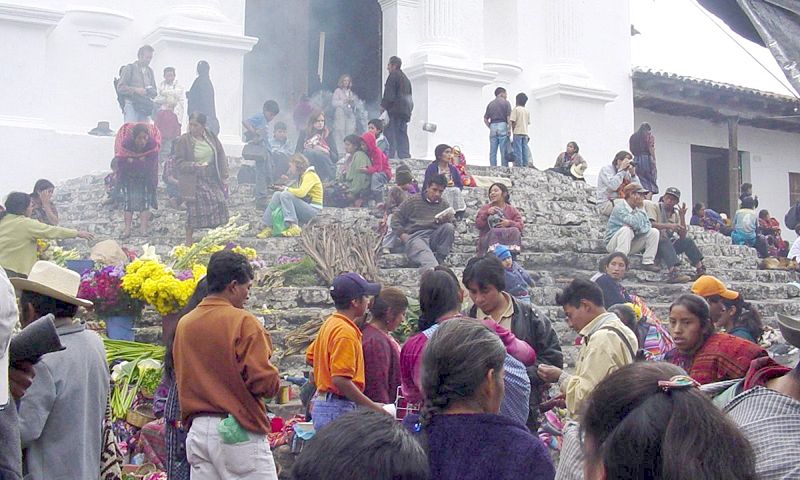
Template:Details more Trade is the voluntary exchange of goods, services and a form of economics. A mechanism that allows trade is called a market. The original form of trade was barter, the direct exchange of goods and services. Modern traders instead generally negotiate through a medium of exchange, such as money. As a result, buying can be separated from selling, or earning. The invention of money (and later credit, paper money and non-physical money) greatly simplified and promoted trade. Because of specialization and division of labor, most people concentrate on a small aspect of manufacturing or service, trading their labour for products. Trade exists between regions because different regions have an absolute or comparative advantage in the production of some tradeable commodity, or because different regions' size allows for the benefits of mass production.
Economics is a social science which studies the production, distribution, trade and consumption of goods and services. Economics focuses on measurable variables, and is broadly divided into two main branches: microeconomics, which deals with individual agents, such as households and businesses, and macroeconomics, which considers the economy as a whole, in which case it considers aggregate supply and demand for money, capital and commodities. Aspects receiving particular attention in economics are resource allocation, production, distribution, trade, and competition. Economic logic is increasingly applied to any problem that involves choice under scarcity or determining economic value. Mainstream economics focuses on how prices reflect supply and demand, and uses equations to predict consequences of decisions.
References
- ↑ Template:MSW3 Groves
- ↑ Latin distinguishes homo (human) and vir (man).
- ↑ Goodman, M., Tagle, D., Fitch, D., Bailey, W., Czelusniak, J., Koop, B., Benson, P., Slightom, J. (1990). "Primate evolution at the DNA level and a classification of hominoids". J Mol Evol. 30 (3): 260 &ndash, 6. doi:10.1007/BF02099995. PMID 2109087.
- ↑ "Hominidae Classification". Animal Diversity Web @ UMich. Retrieved 2006-09-25.
- ↑ The Smithsonian Institution, Human Origins Program
- ↑ "World POPClock Projection". U.S. Census Bureau, Population Division/International Programs Center. Retrieved 2008-05-11.
- ↑ Human evolution: the fossil evidence in 3D, by Philip L. Walker and Edward H. Hagen, Dept. of Anthropology, University of California, Santa Barbara, retrieved April 5, 2005.
- ↑ Human Ancestors Hall: Homo Sapiens - URL retrieved October 13, 2006
- ↑ Alemseged, Z., Coppens, Y., Geraads, D. (2002). "Hominid cranium from Omo: Description and taxonomy of Omo-323-1976-896". Am J Phys Anthropol. 117 (2): 103–12. doi:10.1002/ajpa.10032. PMID 11815945.
- ↑ Frans de Waal, Bonobo. Berkeley: University of California Press, 1997. ISBN 0-520-20535-9 [1]
- ↑ Britten RJ (2002). "Divergence between samples of chimpanzee and human DNA sequences is 5%, counting indels". Proc Natl Acad Sci U S A. 99 (21): 13633–5. doi:10.1073/pnas.172510699. PMID 12368483.
- ↑ Wildman, D., Uddin, M., Liu, G., Grossman, L., Goodman, M. (2003). "Implications of natural selection in shaping 99.4% nonsynonymous DNA identity between humans and chimpanzees: enlarging genus Homo". Proc Natl Acad Sci U S A. 100 (12): 7181–8. doi:10.1073/pnas.1232172100. PMID 12766228.
- ↑ Ruvolo M (1997). "Molecular phylogeny of the hominoids: inferences from multiple independent DNA sequence data sets". Mol Biol Evol. 14 (3): 248–65. PMID 9066793.
- ↑ Brunet, M., Guy, F., Pilbeam, D., Mackaye, H., Likius, A., Ahounta, D., Beauvilain, A., Blondel, C., Bocherens, H., Boisserie, J., De Bonis, L., Coppens, Y., Dejax, J., Denys, C., Duringer, P., Eisenmann, V., Fanone, G., Fronty, P., Geraads, D., Lehmann, T., Lihoreau, F., Louchart, A., Mahamat, A., Merceron, G., Mouchelin, G., Otero, O., Pelaez Campomanes, P., Ponce De Leon, M., Rage, J., Sapanet, M., Schuster, M., Sudre, J., Tassy, P., Valentin, X., Vignaud, P., Viriot, L., Zazzo, A., Zollikofer, C. (2002). "A new hominid from the Upper Miocene of Chad, Central Africa". Nature. 418 (6894): 145–51. PMID 12110880.
- ↑ Eswaran, V., Harpending, H., & Rogers, A. R. "Genomics refutes an exclusively African origin of humans", in Journal of Human Evolution, Vol. 49, No. 1, 2005, pp. 1-18.
- ↑ Vančata1 V., & Vančatová, M. A. "Major features in the evolution of early hominoid locomotion". Springer Netherlands, Volume 2, Number 6, December 1987. pp.517-537.
- ↑ Brues, Alice M. & Snow, Clyde C. "Physical Anthropology". Biennial Review of Anthropology, Vol. 4, 1965. pp. 1-39.
- ↑ Boyd, Robert & Silk, Joan B. (2003). How Humans Evolved. New York: Norton & Company. ISBN 0-393-97854-0.
- ↑ Dobzhansky, Theodosius (1963). Anthropology and the natural sciences-The problem of human evolution, Current Anthropology '4 (2): 138-148.
- ↑ Wolman, David (2008). "Fossil Feces Is Earliest Evidence of N. America Humans" National Geographic
- ↑ Whitehouse, David. "World's population reaches six billion". BBC News, 05 August, 1999. Retrieved on 05 February, 2008.
- ↑ Urban, Suburban, and Rural Victimization, 1993-98 U.S. Department of Justice, Bureau of Justice Statistics,. Accessed 29 Oct 2006
- ↑ Scientific American (1998). Evolution and General Intelligence: Three hypotheses on the evolution of general intelligence.
- ↑ "www.grida.no/climate/ipcc_tar/wg1/007.htm". Retrieved 2007-05-30.
- ↑ American Association for the Advancement of Science. Foreword. AAAS Atlas of Population & Environment.
- ↑ Wilson, E.O. (2002). in The Future of Life.
- ↑ de Beer H (2004). "Observations on the history of Dutch physical stature from the late-Middle Ages to the present". Econ Hum Biol. 2 (1): 45–55. PMID 15463992.
- ↑ "Pygmy." Britannica Concise Encyclopedia. Encyclopædia Britannica, Inc., 2006. Answers.com Accessed 30 Oct. 2006. http://www.answers.com/topic/pygmy
- ↑ Why Humans and Their Fur Parted Way by Nicholas Wade, New York Times, August 19 2003.
- ↑ Rogers, Alan R., Iltis, David & Wooding, Stephen (2004). "Genetic variation at the MC1R locus and the time since loss of human body hair". Current Anthropology. 45 (1): 105–108. doi:10.1086/381006.
- ↑ Jablonski, N.G. & Chaplin, G. (2000). The evolution of human skin coloration (pdf), 'Journal of Human Evolution 39: 57-106.
- ↑ Harding, Rosalind M., Eugene Healy, Amanda J. Ray, Nichola S. Ellis, Niamh Flanagan, Carol Todd, Craig Dixon, Antti Sajantila, Ian J. Jackson, Mark A. Birch-Machin, and Jonathan L. Rees (2000). Evidence for variable selective pressures at MC1R. American Journal of Human Genetics 66: 1351 – 1361.
- ↑ Robin, Ashley (1991). Biological Perspectives on Human Pigmentation. Cambridge: Cambridge University Press.
- ↑ Schwartz, Jeffrey (1987). The Red Ape: Orangutans and Human Origins. pp. pp.286. ISBN 0813340640.
- ↑ 35.0 35.1 Collins, Desmond (1976). The Human Revolution: From Ape to Artist. pp. pp.208.
- ↑ According to the July 2, 2007 Newsweek magazine, a woman dies in childbirth every minute, most often due to uncontrolled bleeding and infection, with the world's poorest women most vulnerable. The lifetime risk is 1 in 16 in sub-Saharan Africa, compared to 1 in 2,800 in developed countries.
- ↑ LaVelle M (1995). "Natural selection and developmental sexual variation in the human pelvis". Am J Phys Anthropol. 98 (1): 59–72. doi:10.1002/ajpa.1330980106. PMID 8579191.
- ↑ Correia H, Balseiro S, De Areia M (2005). "Sexual dimorphism in the human pelvis: testing a new hypothesis". Homo. 56 (2): 153–60. PMID 16130838.
- ↑ Rush D (2000). "Nutrition and maternal mortality in the developing world". Am J Clin Nutr. 72 (1 Suppl): 212 S-240 S. PMID 10871588.
- ↑ "USDA Photo by Gordon Parks". United States Department of Agriculture. Retrieved on February 05, 2008.
- ↑ "Low Birthweight". Retrieved 2007-05-30.
- ↑ Khor G (2003). "Update on the prevalence of malnutrition among children in Asia". Nepal Med Coll J. 5 (2): 113–22. PMID 15024783.
- ↑ Leakey, Richard; Lewin, Roger. Origins Reconsidered - In Search of What Makes Us Human. Sherma B.V., 1992.
- ↑ "Human Development Report 2006," United Nations Development Programme, pp. 363-366, November 9 2006
- ↑ The World Factbook, U.S. Central Intelligence Agency, retrieved April 2, 2005.
- ↑ U.N. Statistics on Population Ageing, United Nations press release, February 28, 2002, retrieved April 2, 2005
- ↑ Diamond, Jared (1997). Why is Sex Fun? The Evolution of Human Sexuality. Basic Books. pp. 167–170. ISBN ISBN 0-465-03127-7 Check
|isbn=value: invalid character (help). - ↑ "Healthy choices on a vegan diet". Vegan Society. Retrieved 2007-02-14.
- ↑ "Vegetarian Diets". Journal of the American Dietetic Association. 103 (6): 748–765. 2003.online copy available
- ↑ Death and DALY estimates for 2002 by cause for WHO Member States World Health Organisation. Accessed 29 Oct 2006
- ↑ Murray C, Lopez A (1997). "Global mortality, disability, and the contribution of risk factors: Global Burden of Disease Study". Lancet. 349 (9063): 1436–42. doi:10.1016/S0140-6736(96)07495-8. PMID 9164317.
- ↑ Earliest agriculture in the Americas Earliest cultivation of barley Earliest cultivation of figs - URLs retrieved February 19, 2007
- ↑ 3-D Brain Anatomy, The Secret Life of the Brain, Public Broadcasting Service, retrieved April 3 2005.
- ↑ Sagan, Carl (1978). The Dragons of Eden. A Ballantine Book. ISBN 0-345-34629-7
- ↑ 55.0 55.1 Jonathan Benthall Animal liberation and rights Anthropology Today Volume 23 Issue 2 Page 1 - April 2007
- ↑ Robert W. Allan explores a few of these experiments on his webpage: http://ww2.lafayette.edu/~allanr/mirror.html
- ↑ "Self-recognition in an Asian elephant". Proc Natl Acad Sci U S A. PMID 17075063.
- ↑ Consciousness and the Symbolic Universe, by Dr. Jack Palmer, retrieved March 17, 2006.
- ↑ Researchers home in on how brain handles abstract thought - retrieved July 29, 2006
- ↑ Dennett, Daniel (1991). Consciousness Explained. Little Brown & Co, 1991, ISBN 0-316-18065-3.
- ↑ Skinner, B.F. About Behaviorism 1974, page 74-75
- ↑ Skinner, B.F. About Behaviorism, Chapter 7: Thinking
- ↑ Ned Block: On a Confusion about a Function of Consciousness" in: The Behavioral and Brain Sciences, 1995.
- ↑ Buss, David M. (2004) "The Evolution of Desire: Strategies of Human Mating". Revised Edition. New York: Basic Books"
- ↑ Thornhill, R., & Palmer, C. T. (2000). A Natural History of Rape. Biological Bases of Sexual Coercion. Cambridge: MIT Press.
- ↑ Royal C, Dunston G (2004). "Changing the paradigm from 'race' to human genome variation". Nat Genet. 36 (11 Suppl): S5–7. doi:10.1038/ng1454. PMID 15508004.
- ↑ Risch, N., Burchard, E., Ziv, E. and Tang, H. (2002). "Categorization of humans in biomedical research: genes, race and disease". Genome Biology. 3 (7): comment2007.2001 - comment2007.2012. doi:10.1186/gb-2002-3-7-comment2007. PMID 12184798.
- ↑ Hua Liu; et al. (2006). "A Geographically Explicit Genetic Model of Worldwide Human-Settlement History". The American Journal of Human Genetics. 79: 230–237.
- ↑ Jorde L, Watkins W, Bamshad M, Dixon M, Ricker C, Seielstad M, Batzer M (2000). "The distribution of human genetic diversity: a comparison of mitochondrial, autosomal, and Y-chromosome data". Am J Hum Genet. 66 (3): 979–88. doi:10.1086/302825. PMID 10712212.
- ↑ The Use of Racial, Ethnic, and Ancestral Categories in Human Genetics Research by Race, Ethnicity, and Genetics Working Group. Am J Hum Genet. 2005 77(4): 519–532.
- ↑ DECONSTRUCTING THE RELATIONSHIP BETWEEN GENETICS AND RACE Michael Bamshad, Stephen Wooding, Benjamin A. Salisbury and J. Claiborne Stephens. Nature Genetics (2004) 5:598-609
- ↑ Implications of biogeography of human populations for 'race' and medicine by Sarah A Tishkoff & Kenneth K Kidd. Nature Genetics 36, S21 - S27 (2004)
- ↑ Genetic variation, classification and 'race' by Lynn B Jorde & Stephen P Wooding. Nature Genetics' 36, S28 - S33 (2004)
- ↑ "The use of racial, ethnic, and ancestral categories in human genetics research". Am J Hum Genet. 77 (4): 519–32. 2005. PMID 16175499.
- ↑ Edwards A (2003). "Human genetic diversity: Lewontin's fallacy". Bioessays. 25 (8): 798–801. doi:10.1002/bies.10315. PMID 12879450.
- ↑ Keita, S. O. Y., Kittles, R. A., Royal, C. D. M., Bonney, G. E., Furbert-Harris, P., Dunston, D. M., and Rotimi, C. M. (2004). Conceptualizing human variation: Nature Genetics 36, S17 - S20 (2004) doi:10.1038/ng1455
- ↑ Max Weber's definition of the modern state 1918, by Max Weber, 1918, retrieved March 17, 2006.
- ↑ Ferguson, Niall. "The Next War of the World." Foreign Affairs, Sep/Oct 2006
External links
Template:Sisterlinks Template:Wikispecies
| Wikimedia Commons has media related to Homo sapiens. |
- MNSU
- Archaeology Info
- Chororapithecus abyssinicus Possible human-orangutan split 20 million years ago. (Aug 26 2007)
Template:Hominidae nav Template:Apes
af:Mens
ar:إنسان
an:Homo sapiens
frp:Humen
ast:Homo sapiens sapiens
gn:Yvypóra
ay:Jaqi
az:İnsan
bn:মানুষ
zh-min-nan:Lâng
be-x-old:Чалавек
bs:Čovjek
br:Den
bg:Човек
ca:Humà
cv:Тăнлă çын
cs:Člověk
cy:Bod dynol
da:Menneske
de:Mensch
dz:Omo dapeonz
et:Inimene
el:Άνθρωπος
eo:Homo
eu:Gizaki
fa:انسان
fy:Minske
ga:Duine
gl:Ser humano
hak:Ngìn-lui
ko:사람
hr:Čovjek
io:Homo
id:Manusia
ia:Esser human
iu:ᐃᓄᒃ/inuk
os:Адæймаг
is:Maður
it:Homo sapiens sapiens
he:האדם הנבון
kk:Адам
kw:Tus
sw:Binadamu
ht:Lòm
ku:Mirov
la:Homo sapiens
lv:Cilvēks
lt:Žmogus
lij:Ëse uman
li:Mins
ln:Moto
jbo:remna
hu:Ember
mk:Човек
ml:മനുഷ്യന്
mr:मानव
ms:Manusia
nah:Tlācatl
nl:Mens
nds-nl:Mense
jv:Manungsa
no:Menneske
nn:Menneske
ug:ئىنساننىڭ
uz:Odam
nds:Minsch
ksh:Minsh
qu:Runa
sq:Njeriu
scn:Umanu
simple:Human
sk:Človek rozumný
sl:Človek
sr:Човек
sh:Čovjek
su:Manusa
fi:Ihminen
sv:Människa
tl:Tao
th:มนุษย์
uk:Людина розумна
ur:انسان
vls:Mens
yi:מענטש
zh-yue:人
bat-smg:Žmuogus
Template:WH
Template:WS
Template:Jb1
- CS1 maint: Multiple names: authors list
- CS1 maint: Extra text
- CS1 errors: ISBN
- CS1 maint: Explicit use of et al.
- Pages with script errors
- Pages with broken file links
- Commons category link is locally defined
- Commons category link is on Wikidata using P373
- Portal templates with all redlinked portals
- Humans
- Tool-using species